Eastern Redbud
Cercis canadensis
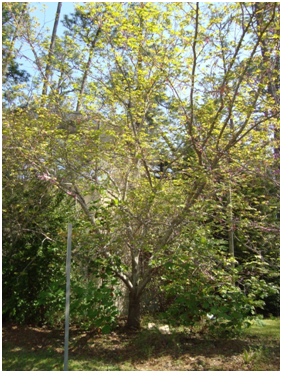
(Photo by Jessica Bartek)
View the Location on Campus
Taxonomy (1,2)
Classification: Angiosperm, dicot
Family: Fabaceae
Common name: Eastern Redbud, Judas tree
General Information (1,2)
Region of Origin: North America
USDA Plants Hardiness Zones: 4-9
Growth Habit: Tree
- Size: 20-30 feet tall
- Deciduous/Evergreen: Deciduous
- Flowering: March-April
- Fruiting: October
Diagnostic Characteristics
Leaves (1)
- Arrangement: Alternate
- Simple/Compound: Simple
- Shape: Cordate
- Other: Petiole is pulvinous
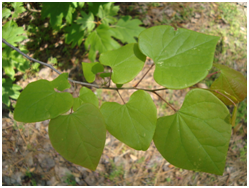
(Photo by Jessica Bartek)
Stem/Bark (1)
- Color: Inner- orange, Outer- brownish-black
- Texture: Scaly
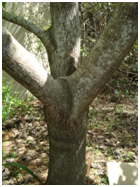
(Photo by Jessica Bartek)
Flower (1)
- Perfect/Imperfect: Perfect
- Color: Pinkish-purple
- Size: 0.5 inches long
- Inflorescence type: Raceme
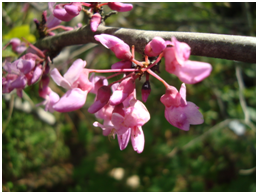
(Photo by Jessica Bartek)
Fruit (1)
- Fruit type: Legume
- Size: 2-3 inches long
- Color: Reddish-green (Immature); Brownish-black (Mature)
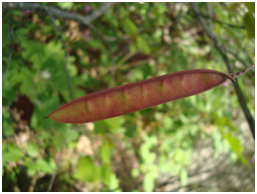
(Photo by Jessica Bartek)
Horticultural Information (1,2)
- Light: Full sun to partial shade
- Moisture: Constant moisture, well-drained
- Maintenance: Easy to care for
- Landscape uses: Ornamental, Shade tree, Shrub border, Frame for houses
- Other: Plant by seed in fall, graft in spring or summer
Interesting Facts (2)
Judas Iscariot hung himself on an ancestor of the Eastern Redbud.
References
1) Dirr, M. (1998). Manual of Woody Landscape Plants. (5th ed., pp. 208-211). Champaign, Illinois: Stipes Publishing L.L.C.
2) Scheper, J. (1996, February 01). Cercis Canadensis. Retrieved from http://www.floridata.com/ref/C/cercis_c.cfm
Prepared by Jessica Bartek as a course requirement for BIOL 3630/5630, Spring 2013
Department of Biology
-
Room 2035, 2nd Floor
Bailey Science Building -
Mailing Address
1500 N. Patterson St.
Valdosta, GA 31698 - Phone: 229.333.5759
- Fax: 229.245.6585
Monday - Thursday
8:00AM until 5:30PM
Friday
8:00AM until 3:00PM
Saturday - Sunday
Office Closed